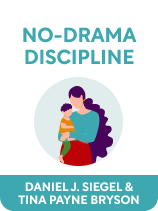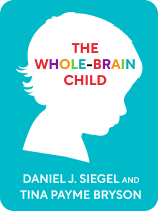

This article gives you a glimpse of what you can learn with Shortform. Shortform has the world’s best guides to 1000+ nonfiction books, plus other resources to help you accelerate your learning.
Want to learn faster and get smarter? Sign up for a free trial here .
Do you often lose patience with your child? How can you get your child to behave without resorting to harsh discipline methods, such as spanking and time-outs?
If you’re a typical parent, you want your children to succeed and live happily and harmoniously with others. However, many parents act contrary to these goals because they fall into autopilot mode—making decisions in the heat of the moment in an effort to make the child behave.
Here’s how practicing conscious parenting can help you get your child to behave without resorting to harsh disciplining techniques.
The Challenge of Parenting
Most parents have similar long-term goals for their children: They want them to be happy, independent, confident, and creative. But it’s easy to forget about these goals in the short term and shift your focus to whether or not the child is being “good” (doing what you want them to do) or “bad” (doing something else) at any given moment.
In an effort to get the child to behave, some parents resort to yelling and spanking. However, such methods aren’t effective because they rely on skills young children don’t have. For example, when parents spank, they assume the memory of that pain will deter their children from misbehaving in the future—that kids will stop and think about that painful memory before acting. However, that kind of impulse control is an upper brain skill that young kids haven’t learned yet, so the logic of spanking sets kids up for failure.
Furthermore, resorting to such harsh disciplining methods isn’t just damaging to the child, it’s unnecessary, especially for very young children. This is because children’s behavior can sometimes be less about emotions and goals and more about trying to understand the world around them. For example, it’s normal for toddlers to hit people or objects purely to see what the result will be, not because they feel upset or angry.
Conscious parenting is looking beyond the short-term goal of getting your child to behave by the most effective means. It involves thinking about how the disciplining techniques you use will affect your child in the future.
The Root of Child Misbehavior
The first step to learning conscious parenting is to understand the root of children’s misbehavior. According to Daniel J. Siegel and Tina Payne Bryson, most misbehavior problems can be attributed to children’s inability to self-regulate emotionally because their upper brain hasn’t developed enough yet. Therefore, young children are simply not capable of higher-level functions such as empathy, impulse control, emotional regulation, and critical thinking. Unlike the lower part of the brain, the upper part is not fully developed in children; in fact, the upper brain doesn’t completely mature until around age 25.
With this in mind, conscious parenting involves setting appropriate expectations for the child. For example, a four-year-old genuinely isn’t capable of sitting quietly in church for an hour without something to distract her—she hasn’t developed impulse control (an upper brain function) yet, which means her brain hasn’t yet learned to control her urges to talk, play, and move around. Her parents should set their expectations accordingly.
Mindful Discipline
In addition to considering brain development, conscious parenting involves approaching discipline in a mindful way, rather than simply reacting on instinct (or blowing up). In practice, mindful discipline means approaching each situation with curiosity. When your child misbehaves, Siegel and Bryson recommend asking yourself these three questions:
Why did my child do that? Usually, the answer has to do with emotions and goals. What emotion were they trying to express? What goal were they trying to accomplish?
What lesson do I want them to learn right now? This answer may vary depending on the answer to the first question. For example, if your child hit her brother because she was feeling jealous of him, you might want to teach her a healthier way to handle jealousy.
How should I deliver that lesson? This answer will also depend on the specifics of the situation. For example, if your daughter is two years old, she may be too young to really understand jealousy, so you may need to simplify how you deliver your lesson. On the other hand, older children can understand nuanced emotions, so you can talk with them about jealousy in more depth.
The Importance of Timing
Conscious parenting is hard to do when your own lower brain is enraged—as might happen, for instance, if you walk into the kitchen to discover your child painting a chocolate syrup masterpiece all over the floor. When that happens, Siegel and Bryson recommend holding off on discipline (other than immediate safety concerns) until both you and your child are calm, focused, and able to have a productive conversation. This might even mean waiting until the next day to talk after everyone has cooled down. Otherwise, you’re likely to resort to autopilot responses like yelling or time-outs.
No-Drama Discipline
by Daniel J. Siegel and Tina Payne Bryson
10 min reading time
47.3k reads
audio version available
Integrate Between the Right and the Left Brain
Not only do young children’s brains lack the capacity for emotional control (because their upper brains haven’t developed enough), they are also prone to more intense emotions. At the same time, their sense of logic is still developing. Therefore, trying to override emotions with reasoning in an effort to get the child to behave is futile.
However, parents can still effectively guide their children to age-appropriate reasoning by helping them to integrate between the left brain (responsible for logic) and right brain (responsible for emotions). In their book The Whole-Brain Child, Siegel and Bryson provide two strategies for handling child misbehavior through right-left-brain integration:
Strategy #1: Connect With Emotions, Redirect to Logic
If your child is in the midst of a right-brain takeover and you try to cut through her emotions with logic, she won’t be able to process your reasoning. Instead, take this two-step approach:
- Connect with the right brain. Show your child that you understand how she’s feeling. Use nonverbal cues, such as hugging her and speaking in a nurturing voice.
- Redirect to the left brain: Once your child is calm, integrate her left brain using reasoning. Address your child’s concerns with logical explanations, or brainstorm solutions together. If your child has been acting inappropriately, explain why her behavior was unacceptable and what the consequences will be, if necessary. She’ll be better able to learn the lesson when she’s in an integrated state.
#2: Help Your Child Tell the Stories of Difficult Memories
Painful and scary experiences can overwhelm your child with emotion, even long after the experience ends. For example, 9-year-old Bella developed anxiety about flushing toilets after she flushed once and watched the water overflow.
Help your child integrate her left brain by telling the story of what happened (order and sequence) and how it made her feel (language). While the right brain processes your personal memories and emotions, the left brain makes sense of them, which is what allows you to attain closure so that the memory doesn’t haunt you.
When you help your child tell her story:
- Emphasize how the situation was resolved, which reassures your child that there’s a solution if the situation were to come up again.
- Talk about strategies to avoid a similar incident in the future (if applicable).
- Help your child create more positive associations with the thing or the place that has become scary. For example, if your child got sick at school and now is afraid to go back, help her focus on her friends and favorite activities.
- Don’t force your child to retell the story if she’s not ready or not in the mood. Children often find it easier to talk while doing some other activity, such as playing a game or driving in the car. If your child still resists talking, encourage her to write about the memory, draw a picture of it, or talk to someone else about it.
The Whole-Brain Child
by Daniel J. Siegel and Tina Payne Bryson
35 min reading time
83.9k reads
audio version available
Unconditional Parenting
Parents who use harsh discipline methods in an effort to get their children to behave also instill in them the idea that parental love depends on the child’s compliance. As a result, the child internalizes the belief that compliance is more important than independent thinking, and that their parents’ approval is more important than their own desires.
According to Alfie Kohn (Unconditional Parenting), parents should stay away from disciplining methods that prioritize compliance above all. Instead, parents must make it absolutely clear to the child that parental love doesn’t depend on their obedience. To that end, Kohn suggests several practical guidelines:
Guideline #1: See Things From the Child’s Perspective
Kohn adds that when you’re trying to figure out your child’s motivations for doing something you don’t like, he recommends going with the most generous interpretation possible of what you’ve observed, for two reasons: First, you don’t want to jump to conclusions that might not be correct, and second, kids internalize the motivations we attribute to them (for example, if you say, “Don’t be selfish, share your toys,” the child might interpret this to mean that she’s a selfish person). Showing empathy to your kids also models the empathetic behavior you want them to grow into later.
Guideline #2: Communicate Unconditional Acceptance
Kohn emphasizes that unconditional parenting isn’t about the message you think you’re sending—it’s about the message the child is receiving. The fact that you love your child unconditionally is less important than how they feel. This doesn’t mean that you see everything your child does as perfect—but it does mean that no matter what he does, your highest priority should always be creating an emotionally safe environment. Body language, facial expressions, and gestures are key here.
Kohn points out that parents who are good at communicating unconditional love and acceptance in normal circumstances often fall down in situations of conflict, where it’s more important, not less, to make the child feel emotionally safe.
Guideline #3: Avoid Intervening Where Possible
According to Kohn, most parents are too quick to meddle in their child’s activities. To help your child build autonomy, let them sort things out for themselves as much as possible—even if it means sitting on your hands or biting your tongue. (Of course, this doesn’t apply if the child is in immediate danger.) Whenever you’re about to ask a child to do something, pause and consider whether it’s really important. If it’s not, keep quiet.
Kohn suggests that instead of constantly telling children what to do, you should foster autonomy by offering choices and asking questions. Wherever possible, let children decide, even if this occasionally makes you feel uncomfortable.
Guideline #4: Keep Calm
Children are extremely sensitive to their parents’ emotional states. If you keep calm, so will your child. Stress causes parents to discipline their kids more severely and more inconsistently, which is exactly what you’re trying to avoid.
Kohn recognizes that staying calm can be a particular challenge if you’re in public, or if a child shouts things like “I hate you!” or “You’re a bad daddy!” In these cases, don’t get flustered; just see this as a way that she’s expressing negative feelings in the moment. If you stay calm, you’re also modeling good emotional regulation, which is one of the most important life skills your child can learn.
Guideline #5: Reflect Regularly
To make sure that you don’t parent according to your mood or unknowingly reproduce patterns from your own childhood, stop and reflect often. Kohn cautions that this isn’t the same as rationalizing the decisions we’ve made (which is often tempting).
The goal isn’t to be overly self-critical, as that doesn’t help either; it’s to introduce a healthy level of humility and an openness to change. Kohn recommends that you stop and ask yourself: “If someone said or did that to me, would I feel loved unconditionally?”
Guideline #6: Control the Environment, Not the Child
Kohn recommends structuring your child’s environment so it sets him up for success. For example, it’s more effective to set up a barrier between the child and any dangerous objects than to continually tell them “no” or move him away. For a small child, this could look like moving breakable objects to higher shelves. If you’re going to leave the house to do something that you know will be boring for your child, bring along some toys or books that will keep him occupied.
This guideline applies to time, too: It’s a universal rule of parenting that the tighter the timeframe, the longer the child will take to get ready. Whenever you can, allot more time to activities than you think you’ll need. Doing this also helps you to keep your cool (Principle #4).
Final Words
There’s no one right way to parent a child. However, there are wrong ways. Specifically, using harsh disciplining methods or getting angry at the fact that your child doesn’t understand logic. As you’ve learned, young children’s brains are simply not capable of higher-order functions such as logic and emotional control. On the other hand, practicing conscious parenting can not only help you get your child to behave, but also aid in the development of these very functions.
If you enjoyed our article about conscious parenting, here are some suggestions for further reading.

Want to fast-track your learning? With Shortform, you’ll gain insights you won't find anywhere else .
Here's what you’ll get when you sign up for Shortform :
- Complicated ideas explained in simple and concise ways
- Smart analysis that connects what you’re reading to other key concepts
- Writing with zero fluff because we know how important your time is








